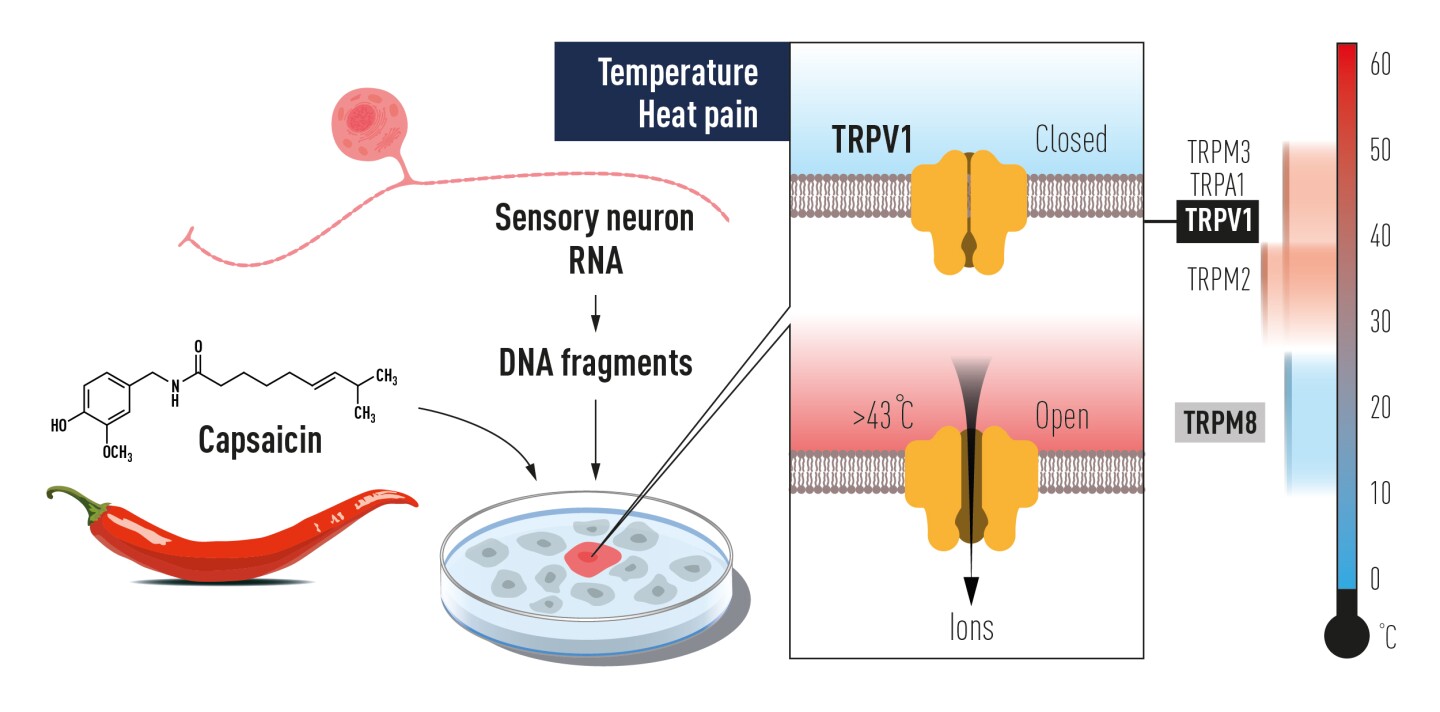How two 2021 Nobel Prize recipients discovered the receptors behind temperature and touch
When a hand touches a hot cup of coffee or two friends hug, the human body knows what is going on and how to respond. How exactly is it able to distinguish between these various sensations?
On October 4th, 2021, David Julius and Ardem Patapoutian received the Nobel Prize in Physiology or Medicine for their research regarding receptors that are fundamental to temperature detection and touch (2). A type of protein, receptors are a key component of the nervous system. Prior to Julius and Patapoutian’s studies, the scientific community knew that receptors for sensing existed and of their importance, but lacked knowledge of their particular location and functionality (1). Both of these scientists are pushing their fields towards a more detailed understanding of how the human body works.

David Julius works on physiology at the University of California San Francisco and the Howard Hughes Medical Institute. The focus of his prize winning work was discovering the receptor that allows the body to identify heat. To begin, the research group compiled genes that are known to be associated with heat and pain, then created combinations of these genes to isolate the DNA that reacted to capsaicin, a chosen stimulant (5). By using capsaicin, the spicy compound found in chili peppers, he was able to target a receptor that responds to the burning sensation from spice and high temperatures (6). Named TRPV1, it is an ion channel activated when fibers in nerve cells detect painful temperatures above 43 degrees Celsius (7). Once triggered, the channel releases an abundance of calcium ions, which subsequently send electrical signals to the brain. Similarly, Julius and Patapoutian both independently used menthol, another chosen stimulant, to discover the TRPM8 receptor, which reacts to cold temperatures (7). In the future, Julius hopes to learn more about how the nervous system detects subtle changes in temperature through future research (1).

Ardem Patapoutian, a neuroscientist at the Scripps Research Institute, discovered the receptors PIEZO1 and PIEZO2 by manipulating specimens in lab dishes. Both PIEZO1 and PIEZO2 are involved with the sensation of touch and named after the Greek word for pressure, píesi (5). The latter is found in cells within the skin, and allows for awareness of extremities as well as internal organ regulation (1). Like TRPV1, these receptors activate ion channels that are triggered by the sensation of touch.
While these discoveries bring hope for further developments in fields such as opioid alternatives and pharmaceutical chronic pain management, current studies are running into issues such as fever induction due to these receptors’ additional role in managing body temperature (4). However, the immense potential for understanding these receptors is monumental, and their numerous applications are just beginning to emerge from these initial breakthroughs.
Bibliography:
- Saey, T. H., & Kreier, F. (2021, October 4). Discovering how we sense temperature and touch wins the 2021 Medicine Nobel Prize. Science News. Retrieved October 10, 2021, from https://www.sciencenews.org/article/nobel-prize-2021-physiology-medicine-julius-patapoutian-temperature-touch
- The Nobel Prize in Physiology or Medicine 2021. NobelPrize.org. (2021, October 4). Retrieved October 10, 2021, from https://www.nobelprize.org/prizes/medicine/2021/press-release/
- Lewis, T. (2021, October 4). 2021 Nobel prize in physiology or medicine awarded for discoveries in sensing temperature and touch. Scientific American. Retrieved October 10, 2021, from https://www.scientificamerican.com/article/2021-nobel-prize-in-physiology-or-medicine-awarded-for-discoveries-in-sensing-temperature-and-touch1/
- Mueller, B., Santora, M., & Engelbrecht, C. (2021, October 4). Nobel prize awarded for research about temperature and touch. The New York Times. Retrieved October 10, 2021, from https://www.nytimes.com/2021/10/04/health/nobel-prize-medicine-physiology-temperature-touch.html
- Kottasová, I., & Hunt, K. (2021, October 4). How chili peppers helped Nobel prize winners understand how we feel heat. CNN. Retrieved October 10, 2021, from https://www.cnn.com/2021/10/04/health/nobel-prize-medicine-physiology-winner-2021/index.html
- Sample, I. (2021, October 4). Nobel prize in Medicine awarded to US duo for work on sense of touch. The Guardian. Retrieved October 10, 2021, from https://www.theguardian.com/science/2021/oct/04/nobel-prize-in-medicine-awarded-to-us-duo-for-work-on-sense-of-touch
- Irving, M. (2021, October 5). First 2021 Nobel prize awarded to Pioneers of Biology Behind Touch. New Atlas. Retrieved October 10, 2021, from https://newatlas.com/biology/2021-nobel-prize-physiology-medicine-touch/






Comments are closed.